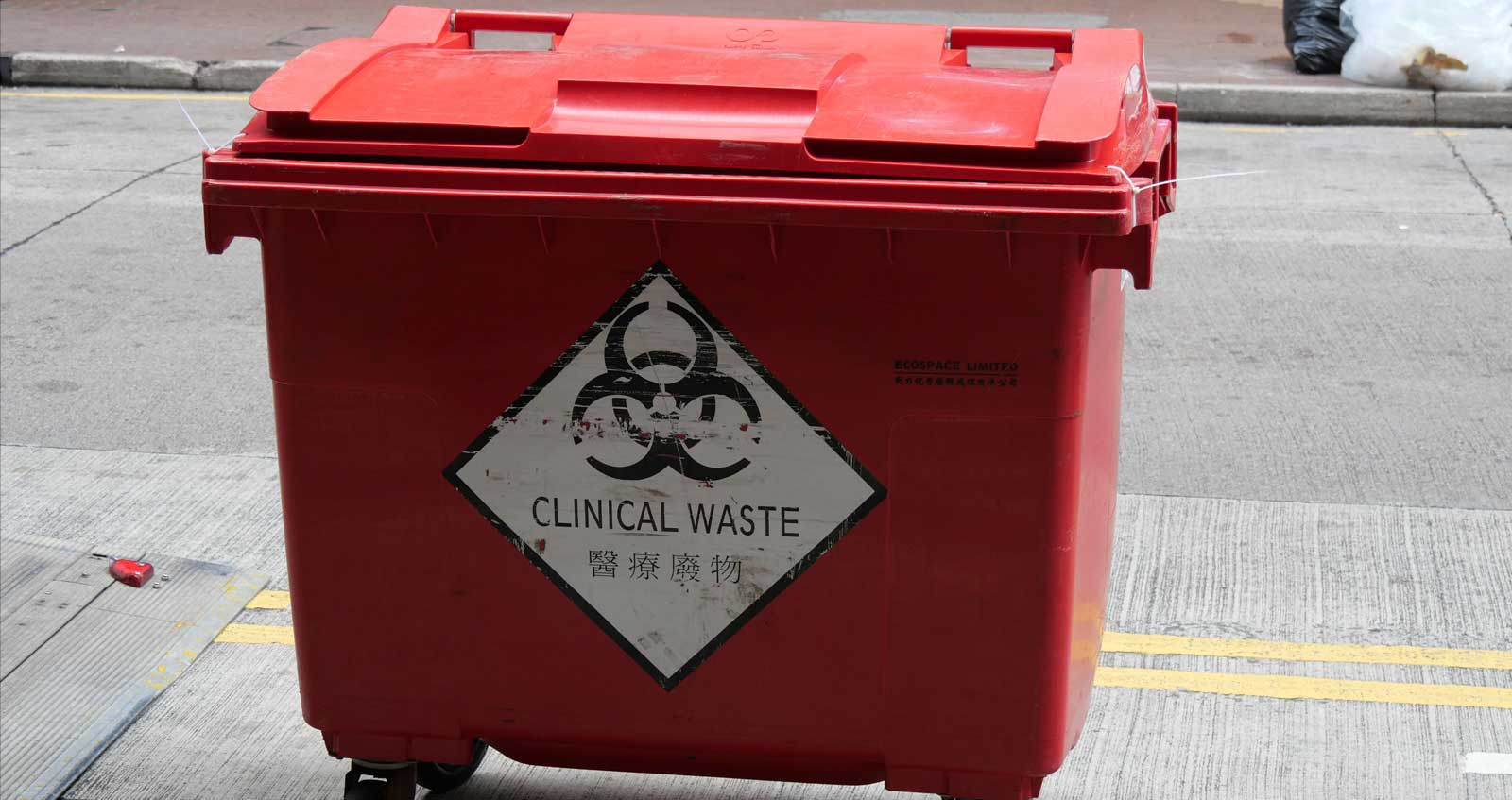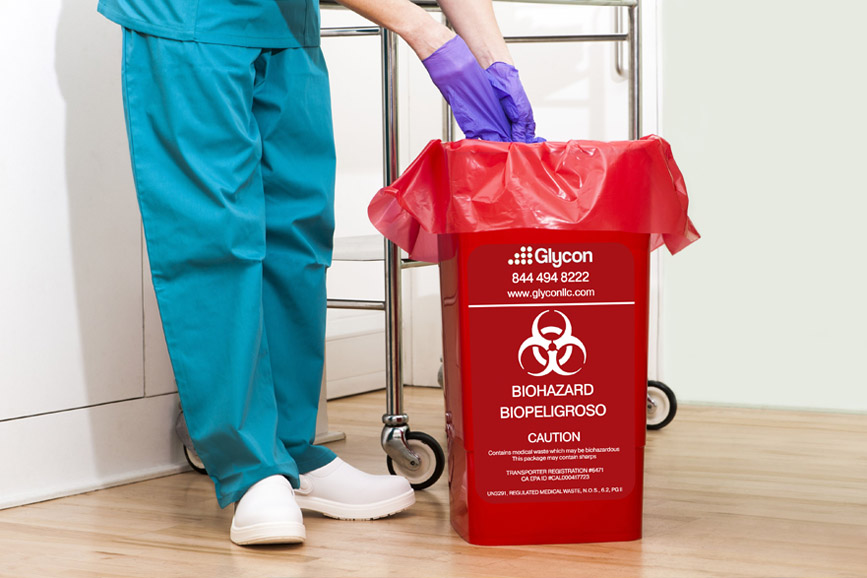Medical Waste Removal Quality: Elevating Safety And Security Specifications in Your Facility
Medical Waste Removal Quality: Elevating Safety And Security Specifications in Your Facility
Blog Article
Minimize Costs and Take Full Advantage Of Safety And Security: Effective Medical Waste Disposal Strategies
Effective clinical waste disposal techniques are vital for healthcare centers to lessen prices and take full advantage of safety and security. By implementing correct segregation and categorization, reliable packaging and labeling, secure transport and handling, effective therapy and disposal methods, and compliance with governing guidelines, healthcare centers can make certain the secure and responsible administration of clinical waste.

Correct Partition and Classification
Appropriate partition and classification are essential elements of efficient medical waste disposal methods, making sure the safety of healthcare workers, the general public, and the setting - medical waste removal services. medical waste disposal services with WasteX. By separating different kinds of medical waste at the factor of generation, healthcare centers can decrease the threat of cross-contamination and potential damage to people and communities
One of the key consider proper partition is the recognition and classification of clinical waste. This involves classifying waste right into different groups, such as infectious, hazardous, radioactive, or pharmaceutical waste. Each classification needs particular handling, storage, and disposal techniques to avoid any unfavorable impacts on human health and the setting.
Furthermore, proper segregation additionally includes making use of color-coded tags and containers to clearly determine and set apart the numerous kinds of clinical waste. This aids health care workers and waste monitoring workers to easily recognize and deal with the waste suitably. For instance, red containers might be utilized for infectious waste, while yellow containers may be designated for unsafe waste.
Along with segregation, proper classification additionally includes the appropriate packaging and containment of clinical waste. This guarantees that waste is firmly kept and carried without posing any kind of threats to people or the environment. Using puncture-resistant and watertight containers, along with appropriately securing and identifying them, aids to avoid any kind of unintentional direct exposure or launch of hazardous materials.
Reliable Product Packaging and Labeling
Effective packaging and labeling play a critical role in making sure the reliable and safe disposal of medical waste. Correct packaging is necessary to stop leakage, breakage, or spillage during transport and handling. It helps to lessen the risk of contamination and safeguards healthcare employees, waste administration employees, and the atmosphere from potential risks.
Clinical waste should be packaged in watertight and durable containers that are resistant to puncture and breakage. These containers need to be effectively sealed to avoid any type of leak. Additionally, the product packaging ought to be able to endure the problems of transportation, including temperature level variations and misuse.
Labeling is similarly vital as it offers important information concerning the components of the waste and any kind of possible risks related to it. The labels ought to consist of the name of the healthcare center, the type of waste, and any kind of special delivery directions. Clear and standardized labeling makes certain that waste management employees can quickly identify and handle the waste properly.
Reliable packaging and labeling also aid in the proper partition and classification of medical waste. Clear labeling enables for simple identification of different waste streams, such as infectious waste, sharps, or pharmaceutical waste. This aids in streamlining the disposal procedure and making sure that the waste is dealt with or gotten rid of based on governing standards.
Safe Transportation and Handling
Making sure the risk-free transport and handling of clinical waste is of utmost significance in order to avoid any kind of prospective health and environmental dangers. Medical waste, such as sharps, contaminated materials, and pharmaceutical waste, need to be correctly packaged and dealt with to minimize the danger of exposure to dangerous materials and virus.
Transporting clinical waste needs compliance with strict policies and guidelines established by ecological companies and local authorities. These laws aim to protect the health and wellness of workers associated with waste monitoring and stop the launch of harmful products into the atmosphere.
To guarantee risk-free transportation, clinical waste needs to be positioned in leak-proof and puncture-resistant containers that are correctly sealed and identified. These containers should be protected in a manner that prevents spills or damage during transportation (medical waste removal services). Additionally, it is important to utilize specialized automobiles equipped with suitable security features to move medical waste. These lorries need to have appropriate ventilation and be made to protect against leakage or contamination.
Handling medical waste additionally calls for correct training and adherence to safety procedures. Workers entailed in the handling of medical waste ought to use ideal personal safety tools (PPE) such as masks, handwear covers, and gowns to reduce the risk of direct exposure. They ought to likewise comply with strict hygiene practices to medical waste disposal services with WasteX stop the spread of infections and ensure the risk-free disposal of waste.
Effective Treatment and Disposal Techniques
Implementing suitable treatment and disposal techniques is essential in managing medical waste properly and minimizing prospective health and wellness and ecological threats. Clinical waste, that includes sharps, contagious products, chemicals, and pharmaceuticals, can position considerable risks if not dealt with and dealt with effectively. There are several treatment and disposal methods offered that follow governing standards and advertise risk-free methods.
One usual method is incineration, which involves shedding the waste at heats. Incineration is reliable in damaging pathogens and lowering the volume of waste, but it can release hazardous pollutants into the air otherwise properly managed. For that reason, it is very important to utilize contemporary incinerators outfitted with discharge control technologies.
An additional method is autoclaving, which uses heavy steam and pressure to sterilize the waste. Autoclaving works in eliminating microorganisms and lowering the quantity of waste, yet it needs careful surveillance and upkeep to guarantee appropriate functioning. The disinfected waste can then be securely gotten rid of in a landfill.
Chemical treatment is one more choice, which includes making use of anti-bacterials or other chemicals to counteract virus. This technique is frequently used for fluid waste, such as lab samplings. It is crucial to utilize suitable chemicals and adhere to correct procedures to make sure effective therapy and prevent environmental contamination.

Compliance With Regulatory Guidelines
Sticking to governing standards is necessary in making certain proper compliance with medical garbage disposal practices. These guidelines are placed in area to protect public health, avoid environmental contamination, and preserve workplace safety. Conformity with regulatory guidelines is vital for health care centers, as non-compliance can result in charges, fines, and reputational damages.
Governing standards outline the appropriate handling, storage space, transportation, and disposal of clinical waste. These standards likewise address the partition of various waste streams, such as sharps, transmittable waste, and pharmaceutical waste.
To keep conformity, medical care centers ought to develop comprehensive waste monitoring programs that include team training, regular audits, and recurring monitoring. It is vital to maintain up-to-date with any updates or changes to regulatory standards, as practices might progress in time. By staying notified and executing correct procedures, healthcare facilities can decrease the possibility for regulative violations and shield the health and wellness of their team, individuals, and the surrounding community.
Conclusion
To conclude, implementing effective clinical garbage disposal approaches is check my source critical for decreasing costs and optimizing safety. Proper segregation and classification, reliable packaging and labeling, risk-free transportation and handling, and site web effective therapy and disposal approaches are essential actions to make certain conformity with regulatory guidelines. medical waste removal near me. By sticking to these methods, healthcare facilities can shield the atmosphere and public health while likewise lowering economic worries connected with clinical waste monitoring
By applying proper segregation and categorization, effective product packaging and labeling, safe transport and handling, reliable therapy and disposal methods, and conformity with regulative standards, medical care facilities can ensure the accountable and risk-free management of clinical waste. Red containers may be used for transmittable waste, while yellow containers may be marked for unsafe waste.
Clear and standardized labeling guarantees that waste monitoring employees can easily identify and manage the waste properly. (medical waste disposal services with WasteX)
Clear labeling enables for easy identification of various waste streams, such as contagious waste, sharps, or pharmaceutical waste. These standards also address the partition of different waste streams, such as sharps, transmittable waste, and pharmaceutical waste.
Report this page